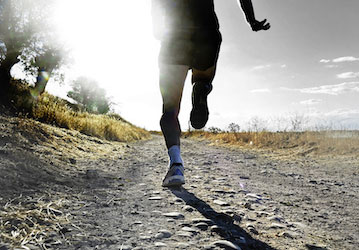You probably don’t put a lot of thought in your breathing during exercise, except maybe during extra-hard workouts when you’re breathing hard. There isn’t necessarily a right or wrong way to do it, but some methods are more efficient and can give you an extra boost in performance. During light-to-moderate exercise, people tend to inhale through their noses and exhale through their mouths. Breathing through your nose helps minimize the number of allergens that get into your airway, warm the air before it gets to your lungs (which can be helpful in cold temperatures), and increase the concentration of oxygen in your blood. However, as exercise intensity increases, most people switch to breathing through their mouths because they can inhale more air per breath with less resistance.
Running experts suggest practicing diaphragmatic breathing (“belly breathing”) rather than shallower chest breathing (where you raise your chest and shoulders when you inhale). With diaphragmatic breathing, your diaphragm (an important muscle in the breathing process) is pushed downward when you inhale, creating space in your chest cavity. You should feel your belly expand as you inhale. It promotes greater expansion of your rib cage and lungs, giving you a fuller, deeper breath. It takes a little practice to learn how to breathe like this while you’re running, but if you lie on your back and breathe, practice yoga, or even play a wind instrument, you’ll know what it feels and looks like.
Finally, remember not to slouch when you run. Lift your torso and chest and lean forward slightly. Your running form also can affect how you breathe. Focusing on your breath can help you be mindful and aware of the activity or workout you’re doing as well.
